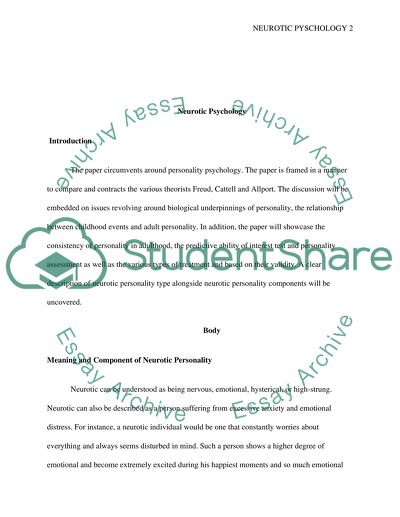Cite this document
(“Neurotic Psychology Research Paper Example | Topics and Well Written Essays - 2500 words”, n.d.)
Neurotic Psychology Research Paper Example | Topics and Well Written Essays - 2500 words. Retrieved from https://studentshare.org/psychology/1671107-the-neurotic-personality
Neurotic Psychology Research Paper Example | Topics and Well Written Essays - 2500 words. Retrieved from https://studentshare.org/psychology/1671107-the-neurotic-personality
(Neurotic Psychology Research Paper Example | Topics and Well Written Essays - 2500 Words)
Neurotic Psychology Research Paper Example | Topics and Well Written Essays - 2500 Words. https://studentshare.org/psychology/1671107-the-neurotic-personality.
Neurotic Psychology Research Paper Example | Topics and Well Written Essays - 2500 Words. https://studentshare.org/psychology/1671107-the-neurotic-personality.
“Neurotic Psychology Research Paper Example | Topics and Well Written Essays - 2500 Words”, n.d. https://studentshare.org/psychology/1671107-the-neurotic-personality.


